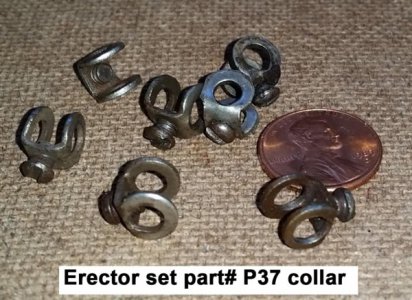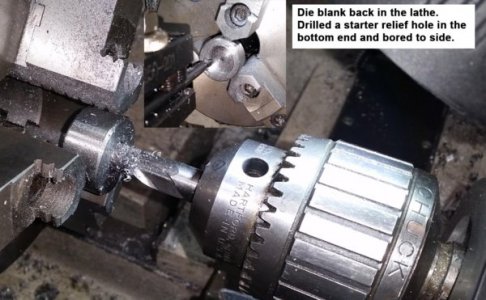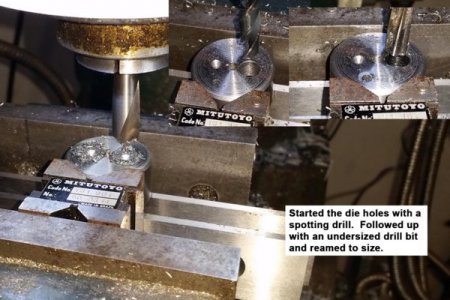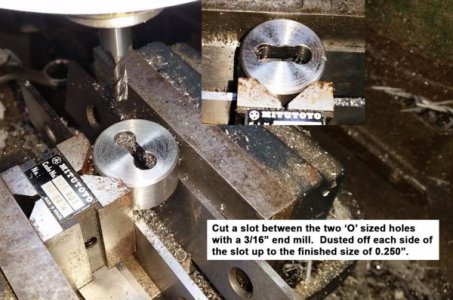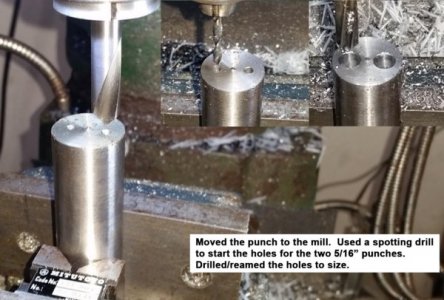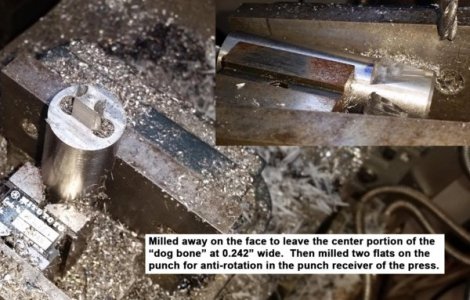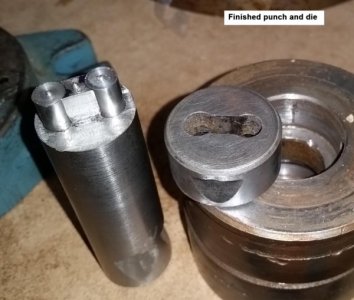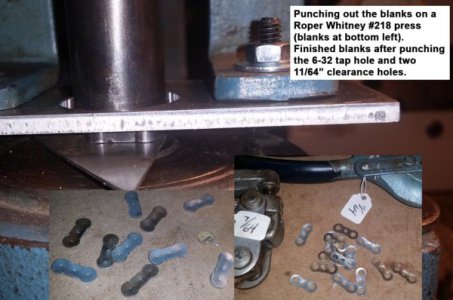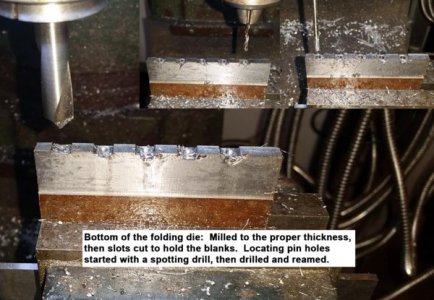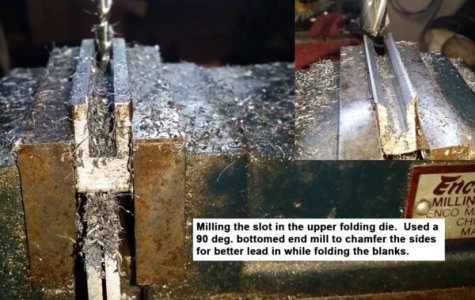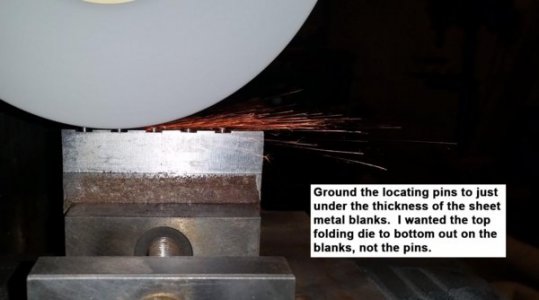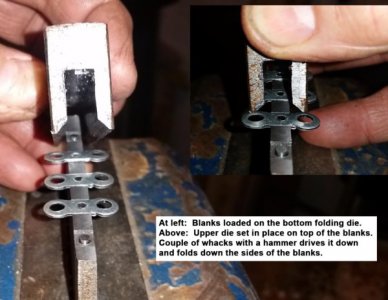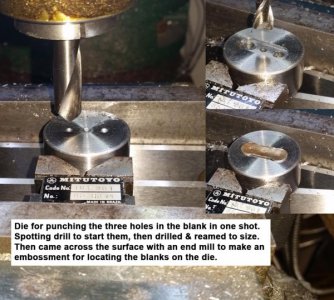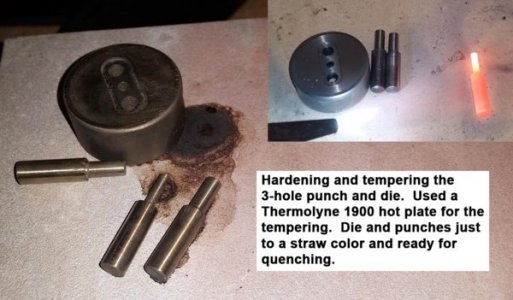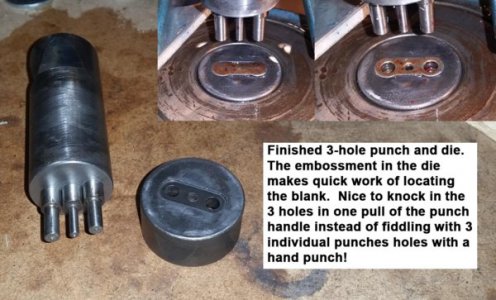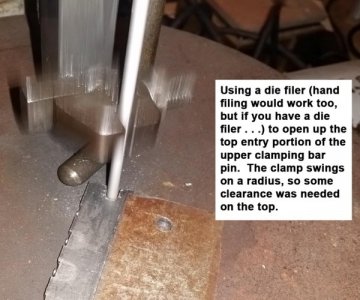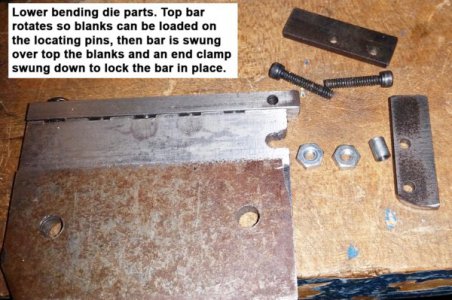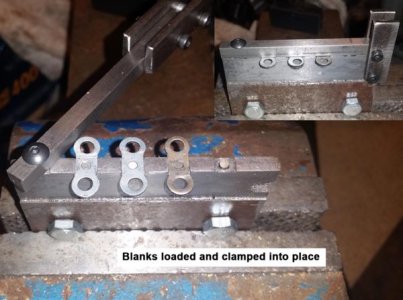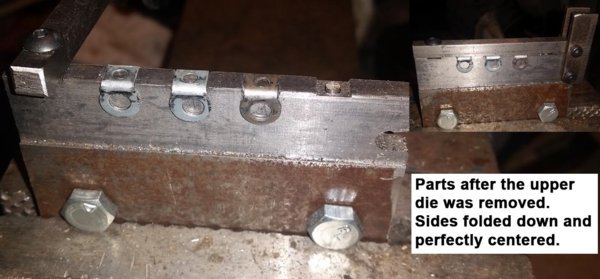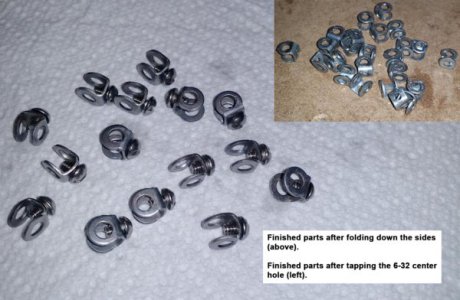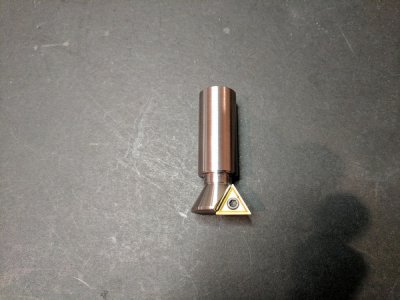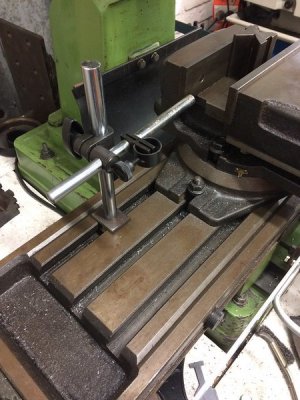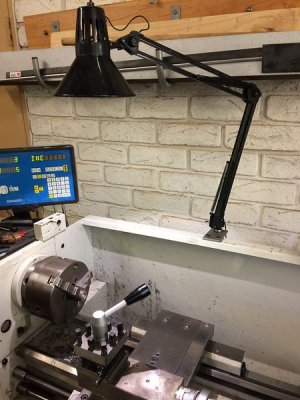POTD (actually 2 days) was my first attempt at making a punch and die (other than a simple round) to be used on my Roper Whitney #218 punch press. A lot of my shop projects are geared toward reproducing old Erector set parts. The part I was reproducing is an Erector p/n P37 collar. It was used on the 5/32” diameter axles to position them and other parts in gear boxes. Gilbert introduced the part in 1914 as a solid steel collar and around 1915 or 1916 changed it to a stamped sheet metal part. The early design was shaped like a “dog bone” with 5/16” diameter ends and a ¼” wide middle. As an aside, they changed the design again in 1924 to straight sides.
The #218 Roper Whitney punch press takes dies 1 ¼”, 2 1/8” or 2 ¾” diameter. Punches are either ½” or 1” diameter. I started with the die; turned a 1 ½” diameter drill rod round down to 1 ¼”. Parted it off and bored out the back side to thin the shearing portion of the die. The die is 5/8” thick, but the portion the punch passes through is only about ¼”.
The die blank went to the mill where a spotting drill was used to start the two round punch holes (thanks for the tip Wreck Wreck). Drilled and reamed to size. Then milled the “bone” between the two holes with a 3/16” end mill. Dusted off either side of the slot until it was ¼” wide. The sides of the die had flats added 90 deg. apart for the anti-rotation screw in the punch press die holder. Next was hardening with an oxy-acetylene torch and a water quench. The die was tempered in a Thermolyne hot plate oven. The top surface of the die got dusted with my surface grinder to crisp up the machined edged.
Next came the punch. That was made from a 1” drill rod round. Faced the round in the lathe but left a little nib at the center which would end up center punching a hole in the sheet metal blank. On to the mill where the two 5/16” punch insert holes were hit with a spotting drill, clearance drilled and reamed. Then the top surface was milled away except for a 0.242” wide rib between the two holes. I read somewhere that punch/die clearance is 20% of the material thickness for plain steel and 25% of stock thickness for stainless. The blanks are 0.036” thick, so the clearance should be around 0.008” between the punch and die.
The two 5/16” diameter punch inserts were made from 5/16” drill rod. Faced the stock on the lathe but left a nib which would serve as a center punch on the sheet metal blank. The length of the inserts were worked so they were flush with the 0.242” center portion of the punch. All three pieces were hardened and tempered.
Next was making a die set to fold the flat sheet metal blank into a “U” shape. Milled the surface of a piece of CRS to the inside width of the “U”. Then cut a shade over ¼” notches in the lower die so the sheet metal blanks would nest in the die. Center holes were hit with a spotting drill, clearance drilled and 1/8” reamed. Locating pins were made from 1/8” dowel pins, shoulder turned to fit into the center hole of the blank. Pins were set in place, then ground down to just a shade under the blank thickness. I didn’t want the upper folding die to bottom out on the pins, wanted it to bottom out on the blank.
The upper folding die was milled to width and lead edges chamfered with a 90 deg. end mill.
Well, it didn’t all initially work out as I had hoped, so like everyone else here, worked the problem. Problem 1 was the time it took to punch the 3 holes in the blanks with a pair of Roper Whitney No. 5 hand punches (two different hole sizes in the blanks). It’s not a difficult operation, but takes time to align the center punched holes to the nibs on the punches. Problem 2 was my folding die. When the top die struck the blank, it would lift the center of the blank off the locating pin so the folds weren’t centered all of the time.
Solution to problem 1: Another punch & die. Same basic operation as the “dog bone” die. I milled a relief in the die that the blank nests into. Really speeds up the operation dropping the blank into the die and popping the 3 holes in one shot.
Solution for problem 2: Made a clamping bar to lock the blanks into the bottom die. One of the 1/8” pins was pulled, re-drilled and tapped 8-32. Made a clamp bar out of ¼” square stock which rotates over the lower die for loading of blanks onto the locating pins. Fab’d up a little swing clamp on the opposite end to lock that end down.
It all came together and works pretty well. The Thermolyne No. 1900 hot plate works great for tempering by the way. Just keep a watchful eye on the process. I stepped away for a few seconds and came back to blue tempered punches/dies instead of straw. Mine came off eBay with the drop-on oven attachment for about $60 delivered.
Bruce
